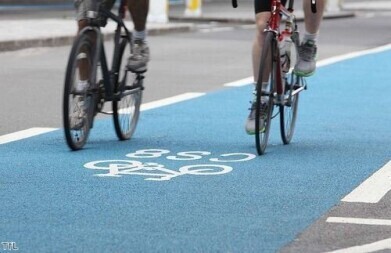Air quality monitoring
Do Barcelona’s superblocks improve air quality?
May 17 2024
In the last few years, Barcelona has deployed a much-publicised planning concept for improving air quality and moving away from car-centricity: the superblock (or superilla). Although it’s an idea that has been circulated in Barcelonan urbanist circles for many decades, its time has only now come – but just how effective has it been at reducing concentrations in one of Europe’s most air polluted cities?
Barcelona’s decade of poor air quality
Since the turn of the century, the European Union, in line with recommendations from the World Health Organisation, has identified and progressively lowered the legal levels of air pollutants. Barcelona (and Spain in general) has struggled to keep pace.
In late 2012, ESCAPE (European Study of Cohorts for Air Pollution Effects) published its results in Atmospheric Environment, detailing variation of NO2 and NOx across 36 European regions between October 2008 and April 2011. Whilst Turin had the highest annual mean distribution of 100.3 NOx μg/m3, Barcelona was a close second with a mean of 90 NOx μg/m3 whereas London sat at 55.3 μg/m3, Paris 53.9 μg/m3 and Copenhagen 23.3 μg/m3.
Though the European Union’s legal levels for particulate matter are less stringent than the WHO’s recommendations, limiting annual average concentrations to below 40 μg/m3 for PM10, 25 μg/m3 for PM2.5, and 40 μg/m3 for NO2, whereas the WHO would prefer 15 μg/m3, 5 μg/m3 and 10 μg/m3, respectively. Nevertheless, in 2019, the European Commission referred Spain to the European Court of Justice for repeated non-compliance with EU air quality standards—and one of the three regions responsible for these breaches was Barcelona.
What are ‘superblocks’?
One of the most famous features of Barcelonian urbanism is its grid-like section towards the coast, where you’ll find Gaudi’s Sagrada Família, Casa Batlló and Casa Milà as well as some of the city’s most popular commercial districts La Rambla de Catalunya and El Passeig de Gràcia. Conceived in the mid-1800s by visionary Catalonian architect Ildefons Cerdà, this district is called L’Eixample (‘The Expansion’) and it’s composed of those iconic octagonal rings of buildings sealing internal backyards. The extra sides of these octagons broaden the district’s intersections, making it far safer for traffic, allowing more sunlight into the city (the streets run northwest to southeast), and facilitating ventilation. This idea, in particular, radical and modern in its time, was followed almost to the letter but in Cerdà’s original vision, gardens were to be planted everywhere, particularly inside the octagons – and it was all designed for vehicles no faster than a horse and cart. So, in the end, L’Eixample ended up both a world-beating architectural marvel and a desert traversed in all directions by high-speed roads.
Until now. The superblock is the brainchild of Salvador Rueda, once involved in Barcelona’s City Council and then director of the city’s Urban Ecology Agency which helps to co-ordinate urban planning across the City, Municipal, Metropolitan and Provincial Councils of Barcelona – but in many ways, it is faithful to Cerda’s vision. By sealing off certain roads to passing-through traffic, a new grid is overlaid on Cerda’s original, grouping nine of his octagons into larger octagons and turning their intersections into the city’s main arteries. Inside these octagons of octagons, in a stunning update of Cerda, will be green public spaces that prioritise pedestrians whilst allowing residents (as well as emergency, service and delivery vehicles) to drive along narrower, lower-speed lanes with fewer parking spaces. The basic principle is that the intersections within the larger octagons have large pedestrian islands plonked down at their centre, forcing motorists to turn rather than driving straight whilst moving considerably slower than is allowed on the main roads. The effect is that motorised through-traffic will be drastically disincentivised, reclaiming residential areas for pedestrians and cyclists (subject to speed limits).
What are the results so far?
In November 2019, a representative from the Environmental Studies Centre of the Vitoria-Gasteiz City Council delivered a presentation to Interreg Europe, a collaborative forum for local governments across the EU, which claimed that Vitoria-Gasteiz (a city just outside of Barcelona) managed to reduce its concentrations of NOx by 42% and particulate matter by 38% since building its superblock in 2007.
In Barcelona proper, the impacts of superblocks in Sant Antoni, Poblenou and Horta have been studied, to varying degrees, by the Salut als Carrers (Health in the Streets) project. In the project’s 2021 report, Sant Antoni, which has had a superblock since 2018, there was a 25% decrease in nitrogen dioxide and 17% decrease in PM10. In Horta, it’s more of a mixed bag. A mobile measurer operated by Agencia de Salut Publica de Barcelona (APSB) found no change in either nitrogen dioxides or particulate matter. Fixed sensors managed by ISGlobal (Barcelona Insitute for Global Health) saw decreases in nitrogen dioxide concentrations of 17% and 27% at two different points, with no real change at other points measured, as well as a ‘considerable decrease’ of black carbon at one point and a ‘moderate increase’ at another.
Digital Edition
IET 35.2 March
April 2025
Air Monitoring - Probe Sampling in Hazardous Areas Under Extreme Conditions - New, Game-Changing Sensor for Methane Emissions - Blue Sky Thinking: a 50-year Retrospective on Technological Prog...
View all digital editions
Events
May 06 2025 Nuremberg, Germany
May 10 2025 Karachi, Pakistan
May 11 2025 Vienna, Austria
May 11 2025 Seoul, South Korea
Salon Analyse Industrielle & Instrumentation
May 14 2025 Paris, France






.jpg)




_(4427399123)-(2).jpg)




.jpg)





